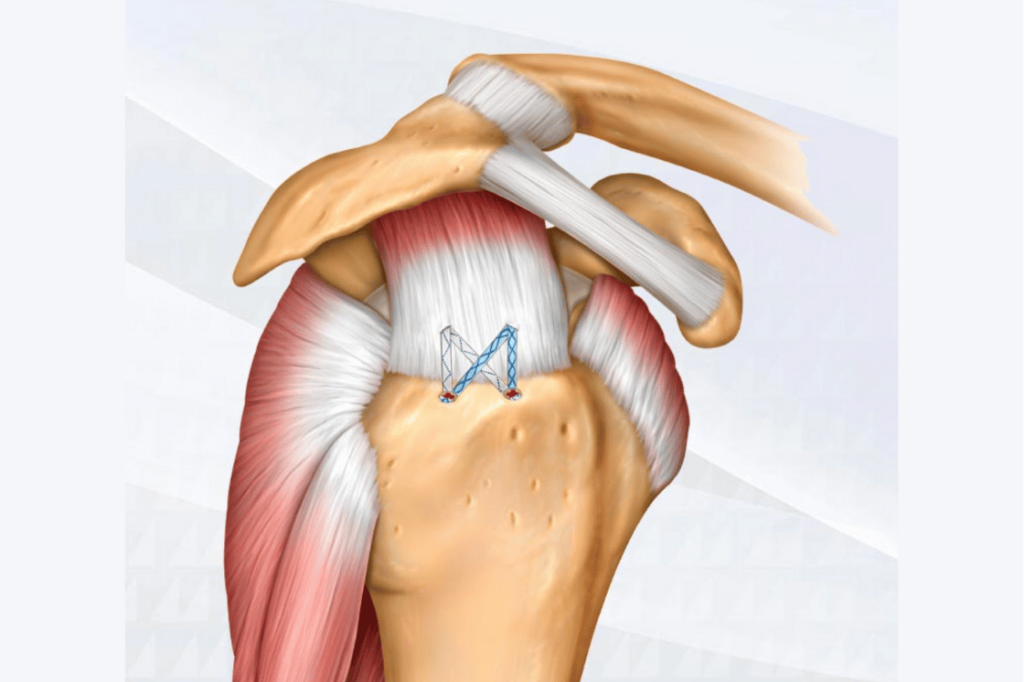The shoulder joint is one of the most mobile and simultaneously one of the most complex structures in our body. This high degree of mobility also makes it susceptible to trauma and wear-and-tear. Specifically, the group of muscles and tendons responsible for the shoulder’s rotation and lifting movements, known as the “rotator cuff,” can tear due to age-related degeneration, repetitive strain, or sudden trauma. Rotator cuff tears manifest as pain, loss of strength, and restricted movement in the shoulder.
The first-line treatment for rotator cuff tears is usually physical therapy and medical management. However, surgical intervention may be necessary for tears that do not improve with these methods or significantly impact daily life. Today, the most preferred method for treating such tears is shoulder arthroscopy, commonly known as “keyhole surgery.” This technique allows for detailed visualization and repair inside the shoulder joint through incisions (cuts) just a few millimeters long.

During arthroscopic surgery, a special camera and micro-surgical instruments are used to clean the torn tendon area. The tendon is then reattached to the bone using special threads and anchors (small devices placed into the bone). During this procedure, additional problems identified in other shoulder structures (such as the bursa, labrum, or biceps tendon) can also be addressed in the same session. Compared to open surgery, the arthroscopic technique causes less tissue damage, leading to faster recovery, less pain, and better cosmetic results.
The surgery is typically performed under general anesthesia, and in some cases, a nerve block (an injection to numb the area) is used to manage post-operative pain. The average operation time varies depending on the size of the tear but generally lasts between 1 and 1.5 hours. A one-night hospital stay is sufficient for most patients, though same-day discharge may be possible in some cases.
Using a shoulder sling is recommended for the first few weeks after this operation. It is important to rest the arm passively (without using your own muscles) for the first 2–4 weeks to allow the tendon to securely reattach to the bone. Afterward, a customized physiotherapy program is initiated to gradually restore the shoulder’s range of motion and muscle strength. Although the full recovery process varies from person to person, most patients can return to daily life activities within 1 month; returning to more strenuous activities, like sports, is possible within 3-6 months.
Rotator cuff tear repair yields highly successful results with the right surgical technique and consistent rehabilitation. Thanks to this operation, patients can significantly improve their quality of life by regaining a painless and functional shoulder.

Surgery Duration: Approximately 60–90 minutes
Type of Anesthesia: General anesthesia (supported by nerve blocks when necessary)
Surgical Method: Closed (arthroscopic) method, performed through small incisions of 3–5 mm
First day: 5–6 (2–3 if a nerve block is administered)
First week: 3–4
After the 2nd week: Drops to 1–2
Hospital Stay Duration Usually 1 night in the hospital Same-day discharge may be planned in some cases
The hospital stay is usually one night.
In some cases, same-day discharge may be planned.
First 2–4 weeks: Supported by a sling, passive movements are performed, active movement is limited
After the 4th week: Active movements begin
1st month: Return to daily activities
3rd-6th month: Sports and full strength use
First dressing change: On the 2nd day
Stitches are generally removed: In the 2nd week (if they are the removable type)
On the first day after surgery, you can use your hand by resting your elbow on a table, eat on your own, and perform simple tasks like washing your face and hands. You will begin hand and elbow exercises on the first day. You will need to wear a sling for comfort when standing for the first 2-4 weeks. Actively using your arm is not recommended during this period. You can perform your own physical therapy by starting passive movements in the 2nd week and active movements after the 6th week.
No. Physical therapy is important for regaining shoulder range of motion and muscle strength after rotator cuff repair. For the vast majority of our patients, performing the prescribed exercises is sufficient. If the recovery pace is below average during follow-ups, or in special cases related to the patient, physical therapy and rehabilitation may be conducted under the supervision of a specialist.
Pain is generally controlled with a nerve block. There may be some sensitivity for the first few days, but it is at a tolerable level with painkillers.
Thanks to the arthroscopic technique, the incision scars are very small. Scars that are cosmetically bothersome are not expected.
A return to desk jobs is possible within 2 weeks. For jobs requiring physical effort, this period may extend to 1-2 months.